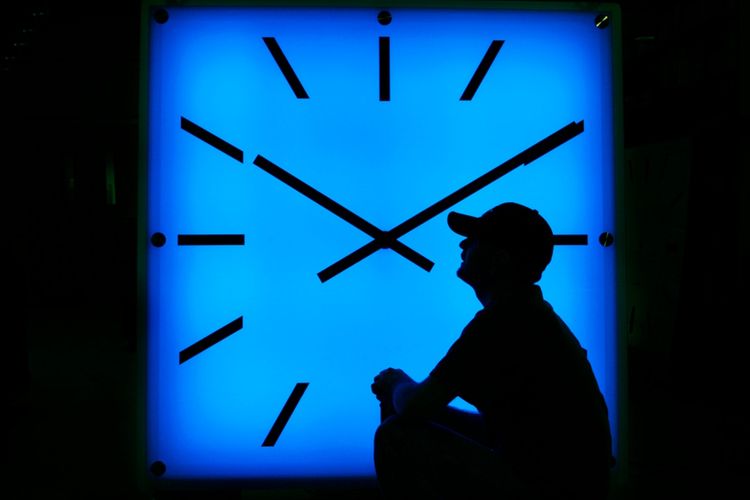When does the time change in November 2024? Daylight saving ...

Daylight saving time ends at 2 a.m. local time Sunday, which means you should set your clock back an hour before you go to bed tonight. Standard time will last until March 9 when we will again “spring forward” with the return of daylight saving time.
That spring time change can be tougher on your body. Darker mornings and lighter evenings can knock your internal body clock out of whack, making it harder to fall asleep on time for weeks or longer. Studies have even found an uptick in heart attacks and strokes right after the March time change.
“Fall back” should be easier. But it still may take a while to adjust your sleep habits, not to mention the downsides of leaving work in the dark or trying to exercise while there’s still enough light. Some people with seasonal affective disorder, a type of depression usually linked to the shorter days and less sunlight of fall and winter, may struggle, too.
Most countries do not observe daylight saving time. For those that do — mostly in Europe and North America — the date that clocks are changed varies.
Two states — Arizona and Hawaii — don’t change and stay on standard time.
Here’s what to know about the twice yearly ritual.
How the body reacts to light
The brain has a master clock that is set by exposure to sunlight and darkness. This circadian rhythm is a roughly 24-hour cycle that determines when we become sleepy and when we’re more alert. The patterns change with age, one reason that early-to-rise youngsters evolve into hard-to-wake teens.
Morning light resets the rhythm. By evening, levels of a hormone called melatonin begin to surge, triggering drowsiness. Too much light in the evening — that extra hour from daylight saving time — delays that surge and the cycle gets out of sync.
And that circadian clock affects more than sleep, also influencing things like heart rate, blood pressure, stress hormones and metabolism.
How do time changes affect sleep?
Even an hour change on the clock can throw off sleep schedules — because even though the clocks change, work and school start times stay the same.
That’s a problem because so many people are already sleep deprived. About 1 in 3 U.S. adults sleep less than the recommended seven-plus hours nightly, and more than half of U.S. teens don’t get the recommended eight-plus hours on weeknights.
Sleep deprivation is linked to heart disease, cognitive decline, obesity and numerous other problems.
Other things to do
After you set the clocks back one hour, officials are hoping you’ll use some of your weekend time to prepare yourself and your residence for potential dangers as winter approaches and diminished daylight becomes a factor in the afternoons and evenings.
At the top of the list:
—Make sure your smoke alarm and its batteries are in working order.
—Check your carbon monoxide alarms as well.
—Use your headlights when driving because of diminished daylight after the time change.
“We encourage people to change the batteries in their smoke alarms and carbon monoxide detectors in the fall and the spring each year,” said Clark County, Nevada, Fire Chief John Steinbeck. “This is a life-saving habit that can keep you and your family safe in the event of a fire or a problem with carbon monoxide levels in your home.”
Reduced visibility while driving is a major concern.
“We are asking motorists and pedestrians to be extra cautious as the hours of daylight become much shorter,” Clark County Commissioner Michael Naft, a traffic safety advocate, said in a county news release. “Sadly, most pedestrian fatalities occur between dusk and dawn when it’s harder for motorists to see pedestrians. It is critical that drivers slow down, pay extra attention, and use their headlights.”
Smoke alarm tips:
—Smoke alarms more than 10 years old need to be replaced.
—Test smoke alarms at least once a month using the test button; replace immediately if they don’t respond properly when tested.
—Make sure everyone in the home understands the sound of the smoke alarm and how to respond.
—Chirping alarms are a warning sign that that battery is low and needs to be replaced.
—Install smoke alarms in every bedroom, outside each sleeping area and on every level of the home.
—Smoke rises, so install smoke alarms following manufacturer’s instructions high on a wall or on a ceiling.
—Smoke alarms with strobe lights and vibration devices are available for hearing impaired people.
Carbon monoxide alarm tips:
—Install in a central location outside each sleeping area of a home.
—Follow manufacturer’s instructions for placement and height.
—Choose a carbon monoxide alarm that has the label of a recognized testing laboratory.
RECOMMENDED•oregonlive.com
—Test carbon monoxide alarms at least once a month and replace according to manufacturer’s instructions.
—If the carbon monoxide alarm sounds, immediately move to a fresh air location outdoors or by an open window or door. Make sure everyone inside the home is accounted for. Call for help from a fresh air location and stay there until emergency personnel arrive.
--The Associated Press and Tribune News Service contributed
If you purchase a product or register for an account through a link on our site, we may receive compensation. By using this site, you consent to our User Agreement and agree that your clicks, interactions, and personal information may be collected, recorded, and/or stored by us and social media and other third-party partners in accordance with our Privacy Policy.









































